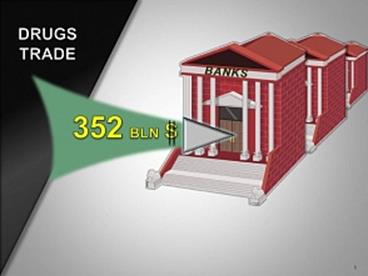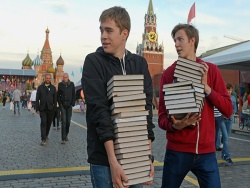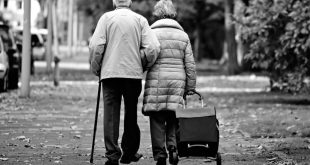
From the book by Natalia Lepinoy “Soviet everyday life. Norms and anomalies. From war communism to the great style”
Life
The October 1917 Russian democratized addict. Winning the people were not slow to succumb to addiction – a luxury previously available only to the elite. The development of drug addiction contributed to the “dry law”. In the 1920s, cocaine traded in the markets, because until 1924 criminal code did not define the sanctions against distributers and drug users. In 1924 banned the free circulation of cocaine, morphine, heroin. Punishment (three years imprisonment) foreseen for the production, storage and distribution. The drug had not been prosecuted. In 1925 appeared the rehabilitation centers for children cocainist in Moscow. Treatment was carried out voluntarily.
The slogans “Meat is bad” and “Carefully chewing food, you help society” – not literary fiction by Ilf and Petrov, and the historical reality of the 1920-ies. Soviet theorists of power have been urged to compensate the lack of fat in the diet consuming fats from pine nuts, soybean, watermelon seeds, pumpkin, and protein – peas, beans, sorrel and spinach. In the 1920-1930-ies there were a lot of cookbooks, which helped Housewives to cook in the conditions of lack of food mainly from potatoes, corned beef, or soybeans. Appeared jokes on the topic of food; for example, at the Leningrad “Red Putilov” in 1928 found there were two posters. First – with a portrait of Lenin and the caption “Down with Lenin the horsemeat”, the second with the portrait of Nicholas II and the caption “Come on Nicholas with pork”.
After 1917, the penniless part of citizens expected an improvement of life. Representatives “the winning class” out of the barracks began to move in apartments of the bourgeoisie and the intelligentsia. The authorities are proud of this project, as evidenced by the shot, when the film “Seal”, about the friendship of Professor with universes to it workers. Leading Bolsheviks lived in communes. For example, in a kind of hostel-commune was transformed into a luxury Moscow hotel “national”. In Petrograd the Bolshevik elite asset focused in Astoria.
In 1922 across the country were held on the days of the “Komsomol Christmas and Komsomol Easter”. Publishing house “Young guard” was even released scenarios for new holidays and religious song books. Christmas tree in houses made secretly. Her rehabilitation was unexpected: in December 1935, in Pravda there was an article Secretary of the Central Committee of the Ukrainian Communist party “Let’s organize for the New year children a good Christmas tree”. The New year was weekends only in 1947, and in 1954 was first conducted by the Soviet tree for children in the Kremlin.
By the summer of 1922 allowed the real estate transaction (with the collapse of NEP – banned). According in 1926, the decree, bought the dwelling was punishable by eviction. In the 1930s, the communal system has become an important factor that made possible the mass hysteria of denunciations. It was allowed self-compacting (self-selection podsljeme), so that the arrest of the neighbor promised to improve conditions. Later the housing problem was compounded by the devastation of the great Patriotic war: by 1952, the number of huts increased by 50% compared with 1940, and the number of inhabitants increased by 33% to 3,847 million people, of which 337 thousand lived in Moscow.
The distribution of clothing and shoes – a direct regulation of the external appearance of above – began immediately after the October revolution and lasted until the fall of 1922. Until about 1924 on the market offered paramilitary clothes, which many have remained since the Civil war – in particular, the famous leather jacket. Since the second half of 1920-h years military-fashion gone.
Between 1923 and 1924 in major cities held a campaign for the withdrawal of a number of books from public libraries. In 1932 the research Institute of children’s literature of the NPC of the RSFSR issued a special instruction on selection of books: ordered to take away everything published until 1926 and for some reason reissued in 1927-1932. Destroyed books, not only oppositionists and émigrés, but also Russian and foreign classics.
In 1920, the Soviet Republic became the first country in the world to legalize abortion. It was assumed that this would help reduce women’s mortality from the effects of artisanal operations. Considering abortion deviation, the Soviet system of protection of motherhood was considered as the norm of the operation without anesthesia. Since 1930, the operation for artificial interruption of pregnancy became paid, and prices increased every year. In 1936 abortion was banned – allegedly “under numerous requests of workers”. Introduced the system of criminal penalties not only pushed the woman to the abortion of persons or doctors, but women themselves. The ban continued after the great Patriotic war. During the 1940-1950-ies has steadily increased the number of illegal abortions and killings of babies.
All-Russian conference of Komsomol in may 1922 called the dance one of the channels of penetration in the youth environment of petty-bourgeois influence. Ideological prohibitions are extended in the first half of the 1920s, tango and two-step. In the second half of 1940s and in the 1950s, widespread collective dance of the evening. In schools they were writing contemporaries, was a “mixture of camp and the first ball of Natasha”.
In the first years of Soviet power was taken as the setting for the struggle with alcohol (Lenin believed that the proletariat “needs no intoxication, which have brought him or deafening”). The “dry law”, adopted in 1914, the Bolsheviks confirmed in 1919. In 1921, the Novgorod provincial Committee of the Komsomol even decided: “To re-registration of all members of the provincial Committee must stop drinking, for ordinary members of the Komsomol – the period up to April 1.”
In the absence of alcohol in the free market flourished moonshine. In 1924, Korney Chukovsky recorded in his diary rocked his case: in the summer from the premises of the biological station near Leningrad began to disappear jars of pickled amphibians. It turned out that the soldiers are stealing alcohol, which were not even embarrassed by the presence of formalin and cadavers! However, in 1925 the government began to produce spirits and to trade them.
In the mid-1930s the widespread availability of vodka and wine and the possibility of purchasing without the cards turned the consumption of alcohol in the norm of Soviet everyday life. In 1936, Mikoyan stated that before the revolution drank of grief and misery, and now, with good and full life, “a drunk don’t get drunk”.
During the war policy of the Stalinist regime have exacerbated the problem of alcoholism in society: the daily “narkomovskaya hundred grams” that was given to the soldiers and officers in the army since 1940. During the great Patriotic war this practice continued; from November, 1942, 100 grams of vodka was given to the participants of battles and 50 grams – those who were in reserve, dug trenches and built fortifications. Holidays 100 grams rely all. Double dose received distinguished themselves in combat.








